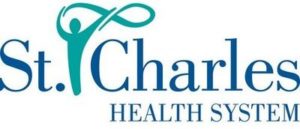 Understand the various symptoms of locked-in syndrome and how they affect the patient.
Understand the various symptoms of locked-in syndrome and how they affect the patient.
Jump To:
The main symptom of locked-in syndrome is paralysis of every voluntary muscle in one’s body except those controlling eye movement. It is the equivalent of having quadriplegia along with no movement in the facial muscles, diaphragm, or intercostal muscles, making it impossible to swallow or even breathe without assistance. Locked-in syndrome does not, however, affect cognitive function, eyesight, or hearing.
If you think this condition sounds like living in a perpetual nightmare, you are not alone, as many people inside and outside the medical community have described it as the worst thing they can imagine getting. Interestingly, though, studies on people who have locked-in syndrome show they have a higher quality of life and are much happier than most expect. With quality medical care and support from loved ones, it is possible to live a meaningful, fulfilling life with locked-in syndrome.
How Locked-In Syndrome Happens
Locked-in syndrome results from damage to the pons, a part of the brain stem essential for communication between the brain and spinal cord . All muscle movement originates in the brain, and the signal travels via the spinal cord to the muscle being moved. The pons helps relay the signal between the brain and spinal cord. When the pons is damaged severely enough, the signal does not make it to the spinal cord, and the muscle never receives it.
Since a pons injury affects the nexus between the brain and spinal cord and not the brain itself, locked-in syndrome has no impact on cognitive function, nor does it affect hearing or eyesight. A person with locked-in syndrome can see and hear everything around them, and they know what is going on and can form coherent thoughts and opinions. The difficulty lies in communicating those thoughts and ideas to others.
Life With Locked-In Syndrome
A person with locked-in syndrome is paralyzed, incapable of moving any muscle except the eyes — and sometimes even those are restricted to vertical movement, looking up and down but not side to side. Their paralysis affects even the muscles that control swallowing and breathing, so they receive their food from a tube and undergo a tracheotomy to let them breathe via an assistance device.
Daily living activities (e.g., eating, bathing, dressing) are impossible to perform without assistance, making 24-hour skilled care an absolute necessity for someone with locked-in syndrome. One thing a person can normally do even with locked-in syndrome is sleep. The condition does not affect sleep/wake cycles.
Causes of Locked-In Syndrome
Locked-in syndrome has a few potential causes. Some, such as chronic illness, infection, and sudden medical events, are beyond anyone’s control. Others may result from medical negligence, in which case the patient’s loved ones may have grounds for a malpractice lawsuit against the doctor, staff member, or medical facility that is responsible.
Lack of oxygen to the brain or bleeding in the brain are the two main causes of the type of pons damage that leads to locked-in syndrome. A patient may have a stroke, embolism, or blood clot that causes brain bleeding. They may develop an infection. They could experience head trauma or an event such as a near-drowning that starves the brain of oxygen. A chronic condition such as Lou Gehrig’s disease may cause the pons to deteriorate.
If medical negligence played a role in the development of locked-in syndrome in your loved one, you have grounds to file a lawsuit and recover compensation, and an attorney from Newsome | Melton can help. Call 888-261-5614 for a free consultation.
Effective Treatments for Locked-In Syndrome
Unfortunately, locked-in syndrome is permanent for well over 99% of patients , meaning no medicine or procedure can cure or even mitigate the condition. The most realistic treatment for locked-in syndrome focuses on helping both the patient and their loved ones adapt to the new normal. This approach emphasizes learning to communicate and requires substantial patience from everyone involved.
Since people with locked-in syndrome can move their eyes, they can learn to communicate with caregivers and loved ones by representing thoughts and ideas with eye movement patterns. This can take a long time for both sides to get comfortable with and is quite like learning another language, but the result — effective communication and a better quality of life for the patient — is worth it.
Brain Injury - News Articles

After a four-week trial, a New Jersey jury in Gloucester County found that the negligence of two emergency room doctors led to the continued abuse of an infant, who suffered permanent brain damage as a result. The jury awarded the child’s mother $45 million in damages because the doctors failed to diagnose the child’s broken
Read More
After nine months of waiting, Angela Marchant went into labor on July 22, 2016. She was rushed into the St. Charles Family Birthing Center, located in Bend, Oregon. The center is operated by the St. Charles Health System, which is one of the largest providers of medical care in the state of Oregon. According to
Read More